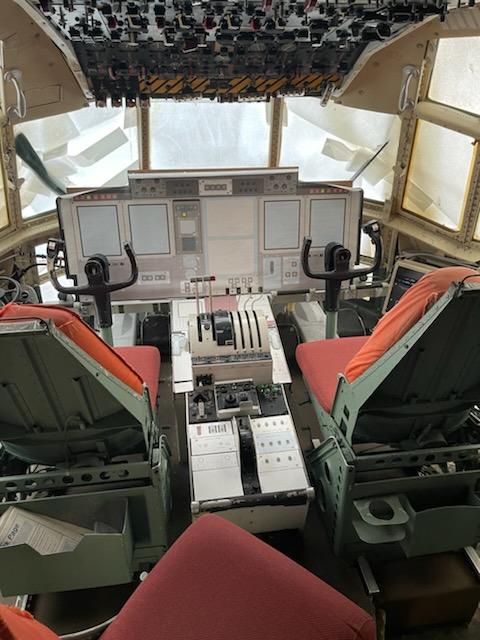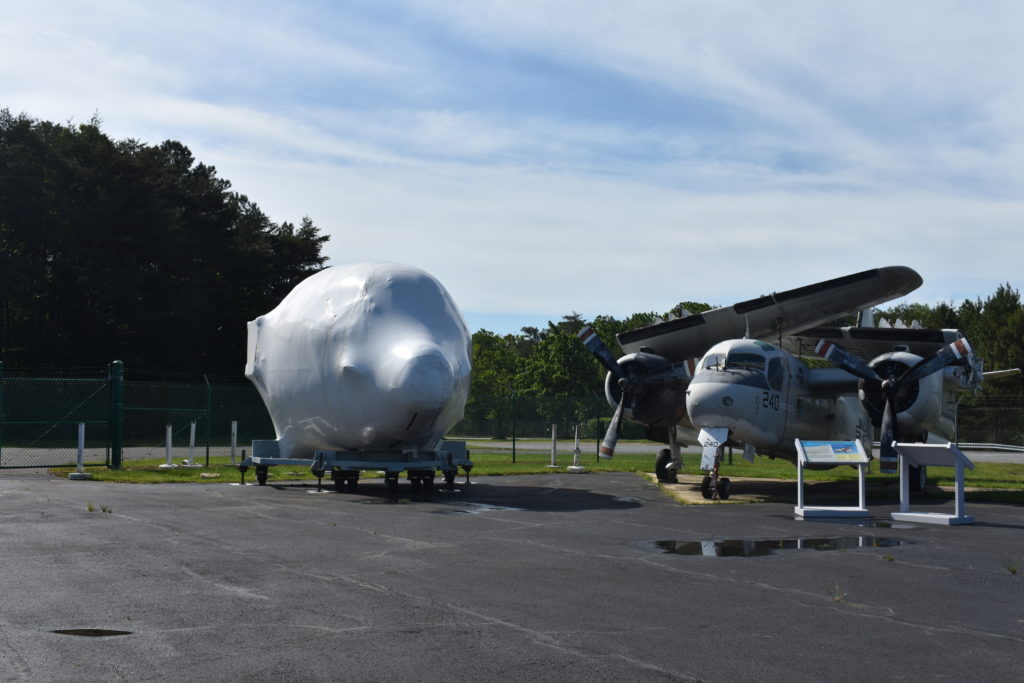No longer needed as a Naval trainer simulator, a giant C-130 training cockpit has found its final destination as a future interactive exhibit at the Patuxent River Naval Air Museum in St. Mary’s County, Md. The cockpit was retired from service and shipped to the museum on April 10, where it sits covered in white plastic wrap, awaiting exhibition.

After being moved from Fort Worth, Texas in 2012, the C-130 trainer simulator spent the previous 10 years at Naval Air Station Patuxent River (NAS Pax River) in St. Mary’s County.
NAS Pax River, the headquarters of the United States’ Naval Air Systems Command, employs over 20 thousand employees, making it the largest employer in Southern Maryland.
Some of those employees trained using flight simulations in the C-130 cockpit. Its parent, the C-130 cargo plane, has been used by the U.S. Air Force, Marines, and Navy since 1960 in “Antarctic support missions, assault transport, aerial tanker, general transport, and many other specialized missions,” says Patuxent (PAX) River Naval Air Museum. The plane’s empty weight comes in at 75,800 pounds and was considered a heavy-duty workhorse for the military. The C-130 can reach a maximum speed of 320 miles per hour.
The simulator trainer cockpit comes in at 23 feet high, 27 feet long (including a trailer beneath), and 16 feet wide, dimensions which made for a slow and careful towing operation to bring the cockpit to the Naval Air Museum.
The simulation device’s “retirement” came after adjustments to the C-130T program were modernized, and the practice cockpit was no longer needed. Team members of the Tactical Airlift Program, NAVAIR news states, received permission to donate it to the museum after its retirement. Currently it sits beside 25 Navy and Marine Corps aircraft at the museum’s flightline, waiting to be unwrapped and transformed into an interactive exhibit.
“We really want people to get up close to it, hands on,” Scott Gray, PAX River Naval Air Museum Executive Director says, “to feel what those pilots feel when they’re in there.”
The cockpit is set to exhibit within the next year, staff speculates, with the right amount of fundraising. Gray looks to the cockpit’s next step at the museum in hopes of it serving as a connection between Naval personnel and the public, saying the museum would “love to hear from vets and people who worked in things like this.”
“It’s more than a tangible object,” he reminds visitors, “It’s about people, people who conceived the need, people who operated it. About people behind it. People are why we’re here.”
PAX River Naval Air Museum is open Tuesday through Saturday, 10 a.m.-5 p.m. and Sundays 12–5 p.m. Admission is $9 for adults, $4 for children.
-Michaila Shahan




